
The Hermetic Order of the Golden Dawn, more commonly the Golden Dawn, was a secret society devoted to the study and practice of occult Hermeticism and metaphysics during the late 19th and early 20th centuries. Known as a magical order, the Hermetic Order of the Golden Dawn was active in Great Britain and focused its practices on theurgy and spiritual development. Many present-day concepts of ritual and magic that are at the centre of contemporary traditions, such as Wicca and Thelema, were inspired by the Golden Dawn, which became one of the largest single influences on 20th-century Western occultism.
A magical organization or magical order is an organization or secret society created for the practice of initiation into ceremonial or other forms of occult magic or to further the knowledge of magic among its members. Magical organizations can include Hermetic orders, esoteric societies, arcane colleges, and other groups which may use different terminology and similar though diverse practices.

Arthur Edward Waite was a British poet and scholarly mystic who wrote extensively on occult and esoteric matters, and was the co-creator of the Rider–Waite tarot deck. As his biographer R. A. Gilbert described him, "Waite's name has survived because he was the first to attempt a systematic study of the history of Western occultism—viewed as a spiritual tradition rather than as aspects of protoscience or as the pathology of religion."

Francis Israel Regardie was an English and American occultist, ceremonial magician, and writer who spent much of his life in the United States. He wrote fifteen books on the subject of occultism.

William Wynn Westcott was a coroner, ceremonial magician, theosophist and Freemason born in Leamington, Warwickshire, England. He was a Supreme Magus (chief) of the S.R.I.A. and went on to co-found the Golden Dawn.
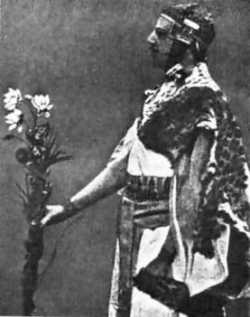
Samuel Liddell MacGregor Mathers, born Samuel Liddell Mathers, was a British occultist and member of the S.R.I.A.. He is primarily known as one of the founders of the Hermetic Order of the Golden Dawn, a ceremonial magic order of which offshoots still exist. He became so synonymous with the order that Golden Dawn scholar Israel Regardie observed in retrospect that "the Golden Dawn was MacGregor Mathers."

An adept is an individual identified as having attained a specific level of knowledge, skill, or aptitude in doctrines relevant to a particular occult discipline, such as alchemy or magic.
Whare Ra is a building in Havelock North in the Hawkes Bay region of New Zealand. The building housed the New Zealand branch of the magical order the Stella Matutina. It was designed and overseen by James Chapman-Taylor, a senior member of the order.
Societas Rosicruciana in Anglia or SRIA is a Rosicrucian esoteric Christian order formed by Robert Wentworth Little between 1865 and 1867. While the SRIA is not a Masonic order, aspirants are strictly confirmed from the ranks of subscribing Master Masons of a Grand Lodge in amity with United Grand Lodge of England.
The Cipher Manuscripts are a collection of 60 folios containing the structural outline of a series of magical initiation rituals corresponding to the spiritual elements of Earth, Air, Water and Fire. The "occult" materials in the Manuscripts are a compendium of the classical magical theory and symbolism known in the Western world up until the middle of the 19th century, combined to create an encompassing model of the Western mystery tradition, and arranged into a syllabus of a graded course of instruction in magical symbolism. It was used as the structure for the Hermetic Order of the Golden Dawn, after the manuscripts came into the possession of prominent SRIA members.
The Stella Matutina was an initiatory magical order dedicated to the dissemination of the traditional occult teachings of the earlier Hermetic Order of the Golden Dawn. Originally, the outer order of the Stella Matutina was known as Mystic Rose or Order of the M.R. in the Outer. When occult writer Israel Regardie released documents of the Golden Dawn to the public it was the teachings of the Stella Matutina that he revealed, not those of the original order. The Stella Matutina was one of several daughter organisations into which the Hermetic Order of the Golden Dawn fragmented, including the Alpha et Omega led by John William Brodie-Innes and Macgregor Mathers, the Isis-Urania Temple led by A. E. Waite, and others.

The Alpha et Omega was an occult order, initially named the Hermetic Order of the Golden Dawn, co-founded in London, England by Samuel Liddell MacGregor Mathers in 1888. The Alpha et Omega was one of four daughter organisations into which the Hermetic Order of the Golden Dawn fragmented, the others being the Stella Matutina; the Isis-Urania Temple led by A. E. Waite and others; and Aleister Crowley's A∴A∴. Following a rebellion of adepts in London and an ensuing public scandal which brought the name of the Golden Dawn into disrepute, Mathers renamed the branch of the Golden Dawn remaining loyal to his leadership to "Alpha et Omega" sometime between 1903 and 1913. "The title was usually abbreviated as A.O." and according to some sources its full name was "Rosicrucian Order of Alpha et Omega". All of the temples of the order appear to have gone out of existence by the Second World War.
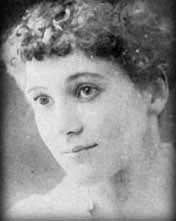
Florence Beatrice Emery was a British West End leading actress, composer and director. She was also a women's rights activist, journalist, educator, singer, novelist, and leader of the occult order, the Hermetic Order of the Golden Dawn. She was a friend and collaborator of Nobel laureate William Butler Yeats, poet Ezra Pound, playwright Oscar Wilde, artists Aubrey Beardsley and Pamela Colman Smith, Masonic scholar Arthur Edward Waite, theatrical producer Annie Horniman, and many other literati of London's fin de siècle era, and even by their standards she was "the bohemian's bohemian". Though not as well known as some of her contemporaries and successors, Farr was a "first-wave" feminist of the late 19th and early 20th centuries; she publicly advocated for suffrage, workplace equality, and equal protection under the law for women, writing a book and many articles in intellectual journals on the rights of "the new woman".
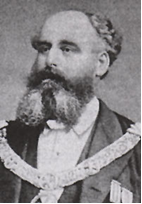
Dr. William Robert Woodman, was Supreme Magus of the SRIA and one of three co-founders of the Hermetic Order of the Golden Dawn. Woodman was a medical doctor, horticultural expert and occultist. He was also a member of several metaphysical orders in England.
Magical mottoes are the magical nicknames, pen names, or pseudonyms taken by individuals in a number of magical organizations. These members were known and sometimes referred to in many publications by these mottoes. Members of these organizations typically adopted such a motto at their initiation into the neophyte grade of the organizations.

William Alexander Ayton was a British Anglican clergyman with an interest in alchemy. He was Vicar of Chacombe from 1873 to 1894. In 1894 he retired on a small pension, and he died at Saffron Walden in 1909. He translated from Latin the life of John Dee written by Thomas Smith.

Robert William Felkin FRSE LRCSE LRCP was a British medical missionary and explorer, a ceremonial magician, member of the S.R.I.A, member of the Hermetic Order of the Golden Dawn, a prolific author on Uganda and Central Africa, and early anthropologist, with an interest in ethno-medicine and tropical diseases.
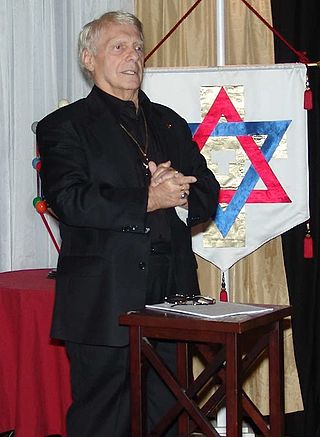
Charles "Chic" Cicero is an American esoteric writer. He was born in Buffalo, New York. He has been a practicing ceremonial magician for the past forty years.
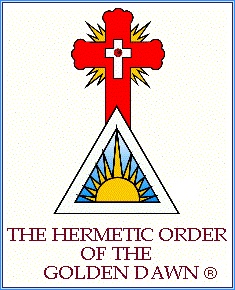
The Hermetic Order of the Golden Dawn, Inc. is a 501(c) non-profit organization associated with a modern magical Order of the same name. While bearing the same name as the historical Hermetic Order of the Golden Dawn (1888–1908), the modern Order does not have or claim direct descent or institutional lineage from the original Order or from the Societas Rosicruciana in Anglia. The order is run by Chic Cicero and Sandra Tabatha Cicero.
Edmund William Berridge (1843–1923) was a medical doctor in London, homoeopathist in the United States and occultist. He joined the Golden Dawn in May 1889, taking the magical name "Respiro" and the motto Resurgam. He was also a follower of Thomas Lake Harris.













